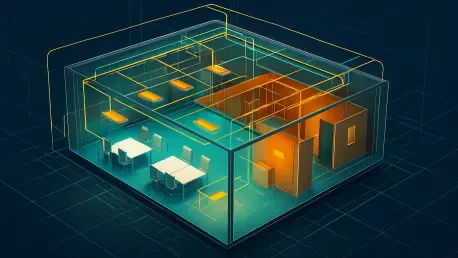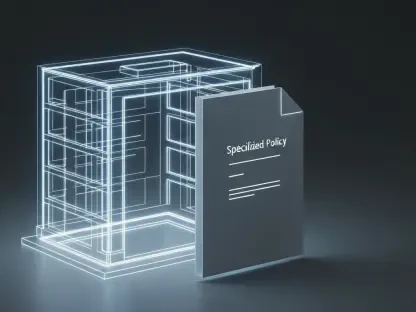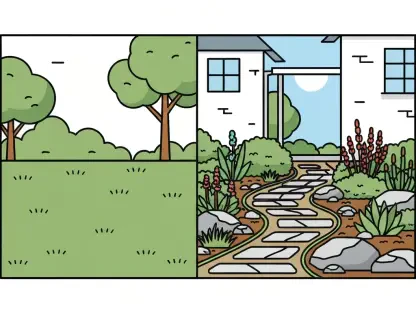Imagine a world where architectural lighting design seamlessly blends creativity with precision, where data flows effortlessly between tools, empowering designers to craft spaces that are both beautiful and compliant with stringent standards. This vision is now closer to reality with a groundbreaking collaboration between two industry leaders in design and lighting simulation software. Their partnership aims to transform Building Information Modeling (BIM) workflows by integrating advanced lighting analysis into the design process. Architects, interior designers, and landscape professionals across the globe stand to benefit from a more connected and efficient approach to projects, ensuring that lighting is not just an afterthought but a critical component of functionality and aesthetics. This alliance promises to address long-standing challenges in data exchange and cross-disciplinary coordination, setting a new benchmark for how lighting design is incorporated into modern architecture.
Transforming Design Workflows
Bridging BIM and Lighting Simulation
The collaboration between these two software giants focuses on merging robust BIM environments with cutting-edge lighting simulation capabilities. By utilizing the open IFC (Industry Foundation Classes) file format, designers can now transfer data smoothly between platforms, ensuring that intricate models retain their integrity during the process. This integration enables access to an expansive catalog of lighting products from hundreds of leading manufacturers, allowing for detailed simulations that reflect real-world conditions. Furthermore, the ability to conduct in-depth daylighting studies and precise lighting analyses equips professionals with critical insights into performance metrics and compliance requirements. Such tools empower users to make informed decisions early in the design phase, reducing the likelihood of costly revisions later. The result is a workflow that not only enhances accuracy but also streamlines communication between design software, ultimately saving time on project schedules while maintaining high standards of quality.
Enhancing Project Efficiency
Beyond the technical integration, this partnership significantly boosts project efficiency by minimizing errors and improving documentation accuracy. Once lighting analyses are completed in the simulation platform, the data can be reincorporated into the BIM environment for detailed project records. This seamless loop of information ensures that all aspects of the design—from conceptual lighting layouts to final specifications—are aligned and up-to-date. Such precision is vital for meeting regulatory standards and client expectations, particularly in complex projects where lighting plays a pivotal role in both aesthetics and functionality. Additionally, the reduction of manual data entry and file conversions frees up valuable time for designers to focus on creative problem-solving rather than tedious administrative tasks. By fostering a more fluid exchange of information, this collaboration helps teams deliver projects faster without compromising on the intricate details that define exceptional design outcomes.
Fostering Collaboration and Accessibility
Empowering Cross-Disciplinary Teams
A standout feature of this alliance is its emphasis on strengthening collaboration among diverse project stakeholders. Lighting design is not merely a visual element but a fundamental aspect of a building’s functionality and adherence to codes, and this partnership recognizes that importance. By integrating advanced simulations and manufacturer-specific data into BIM projects, teams can ensure that every decision is grounded in accurate, real-time information. This approach breaks down barriers between architects, lighting designers, and other professionals, creating a shared platform where ideas and data converge. The enhanced coordination leads to designs that are not only visually stunning but also practical and compliant with industry standards. Ultimately, this collaborative framework results in higher-quality outcomes, as all parties work from a unified source of truth, minimizing misunderstandings and fostering trust throughout the project lifecycle.
Prioritizing User-Friendly Integration
Accessibility remains a core pillar of this partnership, ensuring that professionals of varying expertise can adopt the new workflow with ease. Comprehensive guides and step-by-step instructions are readily available, simplifying the process of integrating these powerful tools into daily practice. This focus on usability eliminates steep learning curves, allowing architects and designers to quickly harness the benefits of advanced lighting analysis without extensive retraining. Moreover, the long-standing reputation of the lighting simulation software, trusted by hundreds of thousands of planners worldwide, adds a layer of reliability to the integration. Educational resources, including training in lighting technology and building automation, further support users in maximizing the potential of these tools. By prioritizing practicality and user experience, this collaboration ensures that the benefits of enhanced BIM workflows are within reach for professionals across architecture, interior design, and landscape planning, regardless of their technical background.
Reflecting on Industry Impact
Driving Data-Driven Design Trends
Looking back, the alliance between these two software leaders marked a pivotal moment in the design and construction industry, reflecting a broader shift toward interconnected, data-driven workflows. The adoption of open standards like IFC proved instrumental in dismantling silos between disparate software platforms and disciplines. This partnership addressed a critical need for precision in architectural projects by combining design-centric BIM tools with specialized lighting expertise. The integration of up-to-date manufacturer data into the design process ensured that decisions were both feasible and aligned with compliance requirements. By championing interoperability, this collaboration set a precedent for how technology can bridge gaps between creativity and practicality, paving the way for a more holistic approach to project delivery. Its influence underscored the growing importance of seamless data exchange in achieving efficiency and innovation across the built environment.
Shaping Future Possibilities
Reflecting on the strides made, this partnership also opened doors to future advancements in BIM and lighting design integration. The emphasis on user accessibility and cross-disciplinary teamwork laid a strong foundation for continued evolution in design technology. Professionals who adopted these integrated tools found themselves better equipped to tackle complex projects with confidence and accuracy. Moving forward, the industry can build on this success by exploring additional ways to incorporate real-world data and simulation into early design stages. Stakeholders are encouraged to stay engaged with evolving resources and training opportunities to fully leverage these innovations. The lasting impact of this collaboration demonstrated that strategic alliances, grounded in open standards and practical application, could redefine how lighting design enhances architectural outcomes, ultimately benefiting projects and professionals on a global scale.









